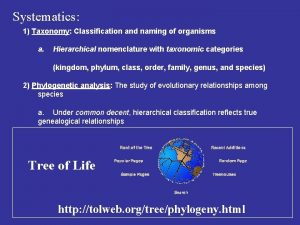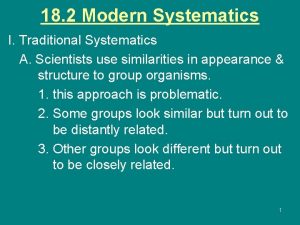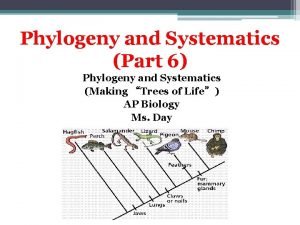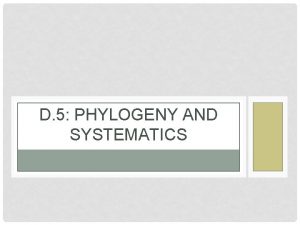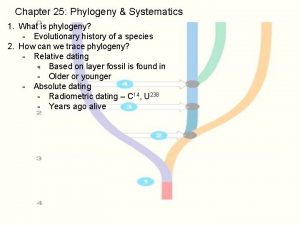Chapter 25 Phylogeny and Systematics Phylogeny is the







- Slides: 7

Chapter 25 Phylogeny and Systematics

• Phylogeny is the evolutionary history of a species or group of species. • Phylogeny is based on fossil, morphology and molecular evidence. • The closer the physical and molecular similarities the more closely related. • Convergent evolution causes problems when discussing phylogenies.

Classification and Evolution • Carolus Linnaeus was responsible for the binomial nomenclature way of classification. • His method was based on physical similarities but had nothing to do with evolutionary relationships. • Linnaeus also used an increasing hierarchy of broad groups.

Phylogenetic Trees • Branching diagrams to depict hypotheses about evolutionary relationships. • Trees are constructed of dichotomies, representing the divergence of two species from a common ancestor. • The “deeper” the branch, the greater amount of divergence.

Cladograms • Patterns of shared characteristics are depicted on a cladogram. • Although the cladogram does not imply evolutionary history, it does form the basis of a phylogenic tree if the shared characteristics are due to a common ancestor. • A group of species that includes an ancestral species and all its descendents clade.

Parsimony and Likelihood • In composing a phylogenic tree, one must take into consideration the evolutionary history. • In doing so, systematic biologists use the principles of parsimony. • Parsimony implies that simpler hypotheses are preferable to more complicated ones. • Along with parsimony, the principles of maximum likelihood are also used.


